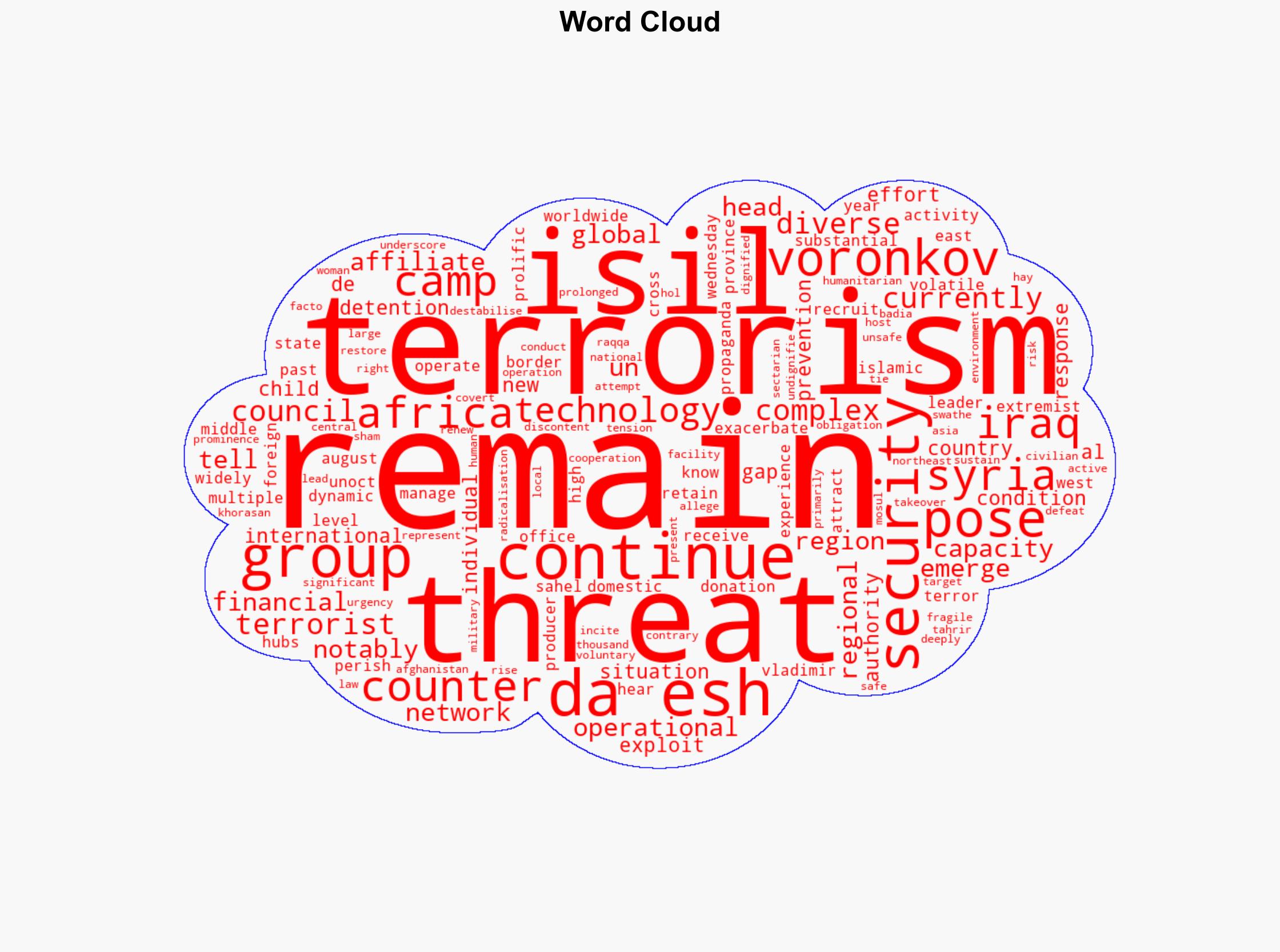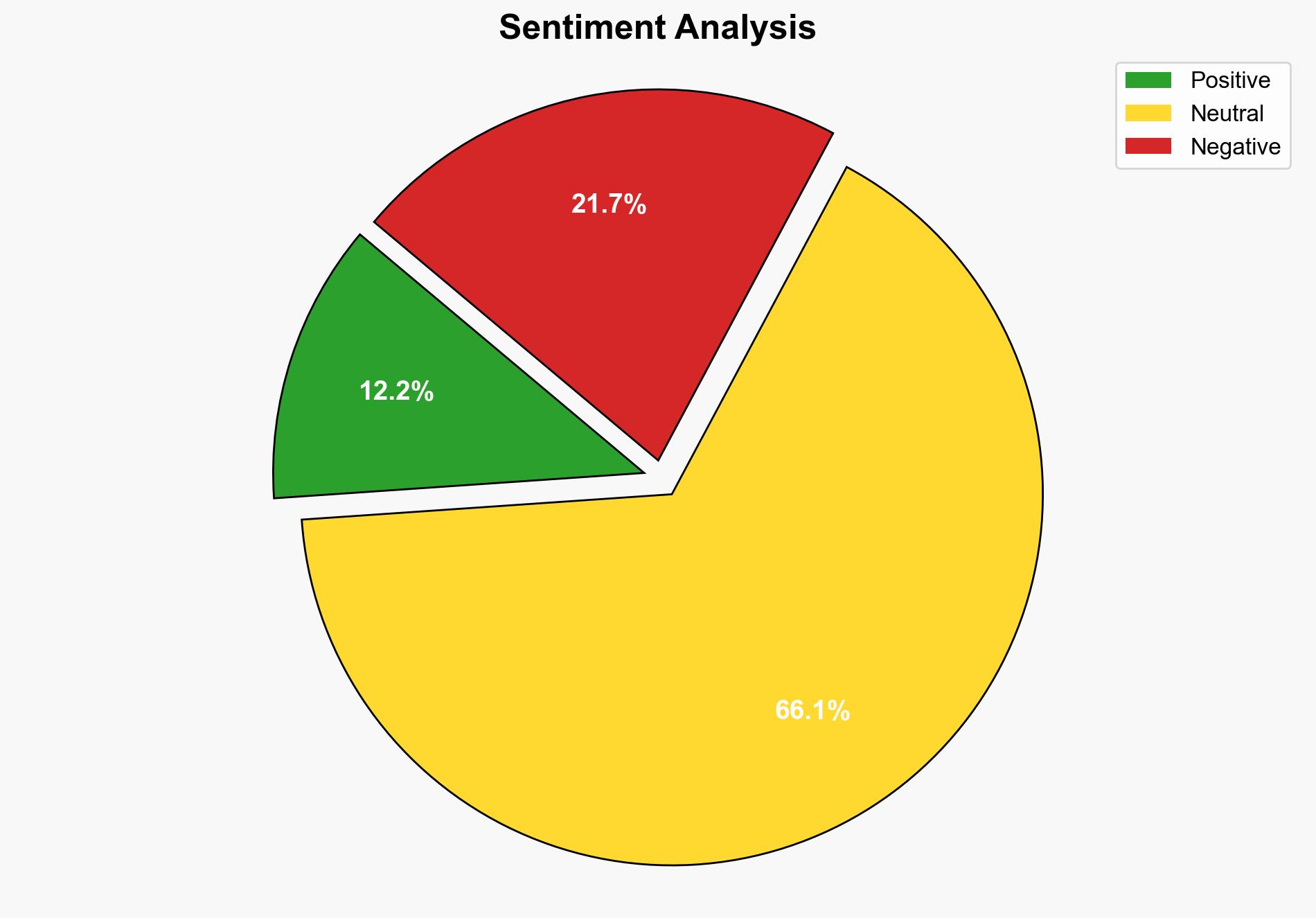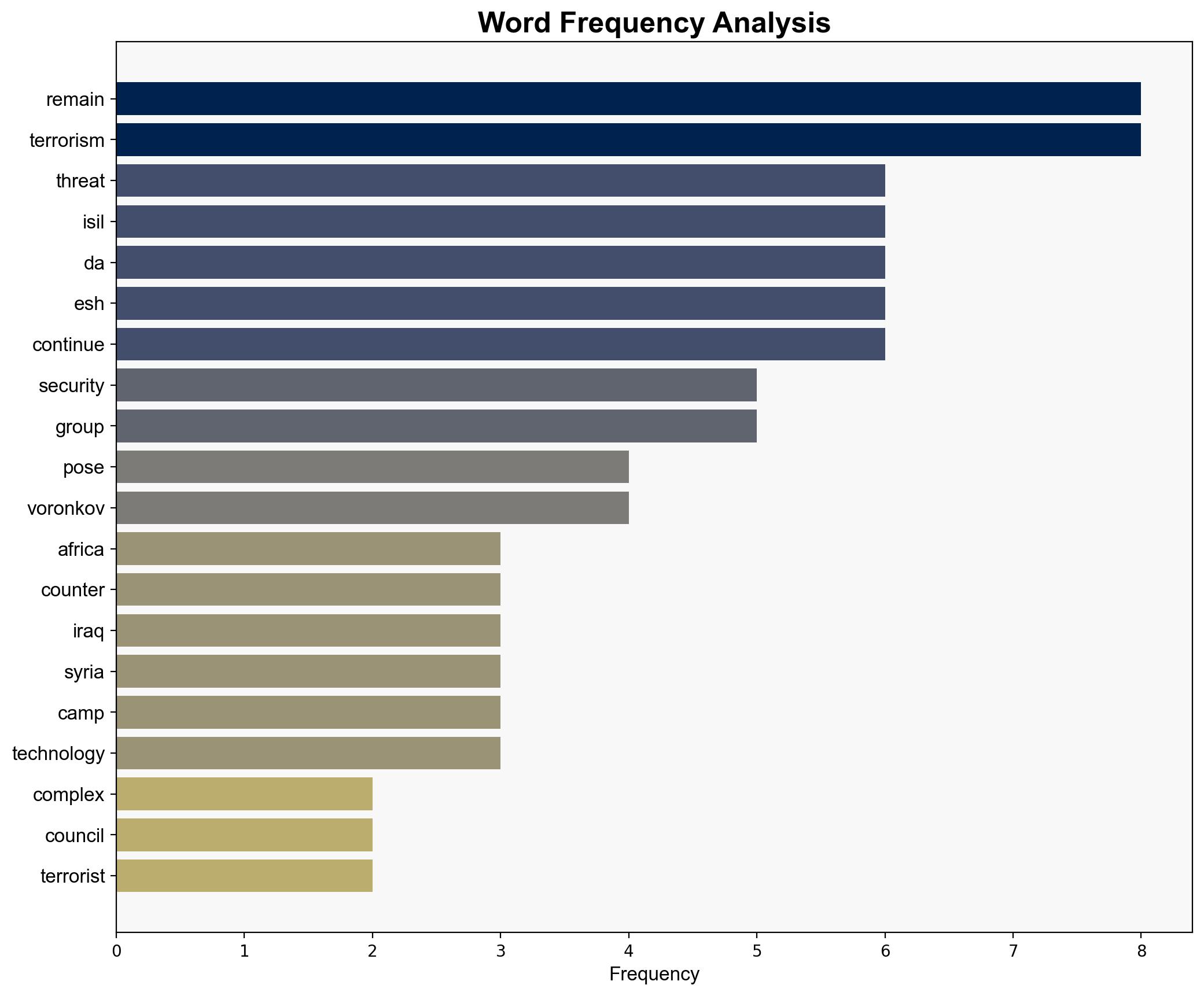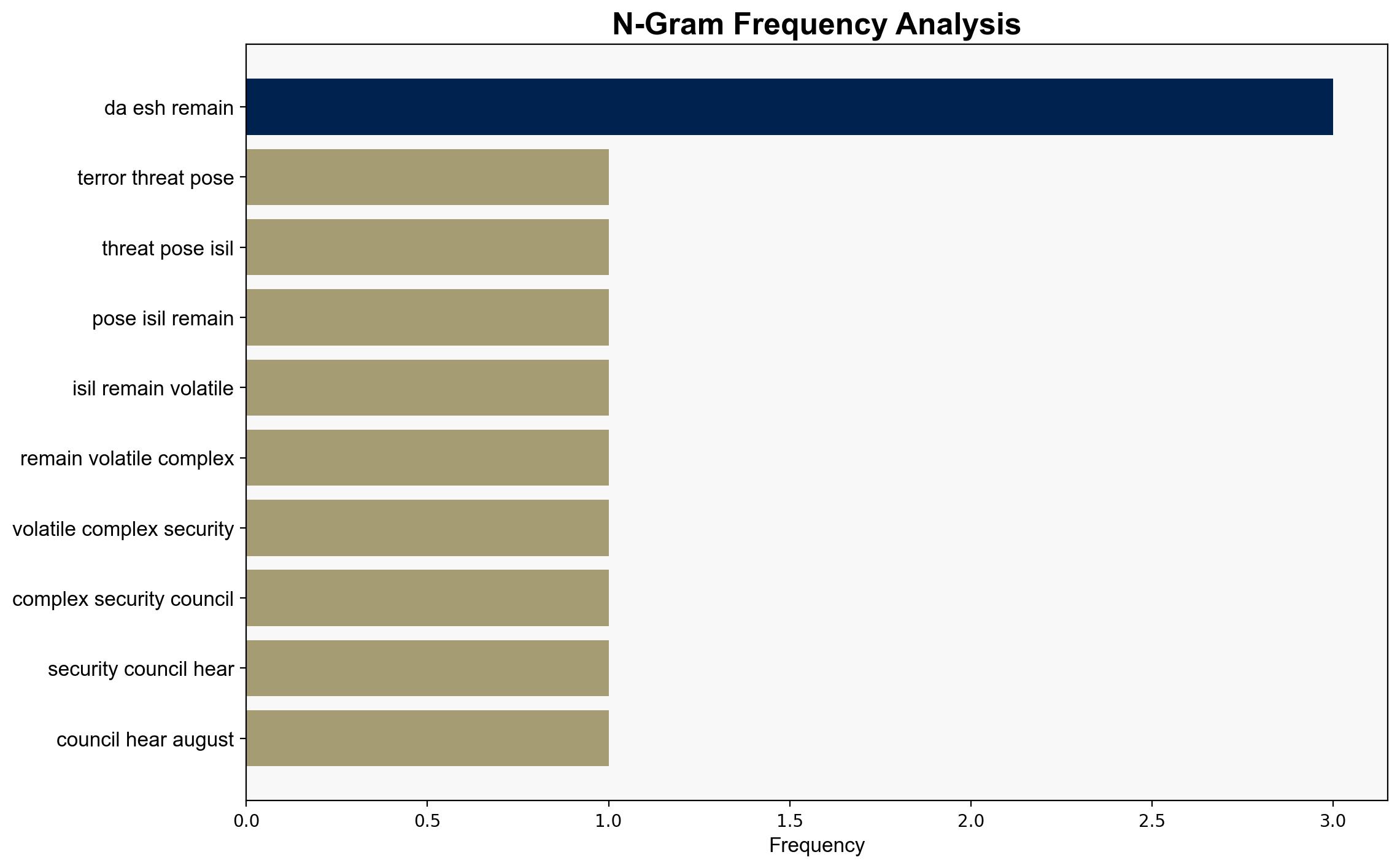Terror threat posed by ISIL ‘remains volatile and complex’ Security Council hears – Globalsecurity.org
Published on: 2025-08-21
Intelligence Report: Terror threat posed by ISIL ‘remains volatile and complex’ Security Council hears – Globalsecurity.org
1. BLUF (Bottom Line Up Front)
The threat posed by ISIL remains significant and multifaceted, with a high degree of volatility and complexity. The most supported hypothesis is that ISIL is adapting to geopolitical changes and technological advancements to maintain its influence and operational capacity. Confidence level: Moderate. Recommended action: Enhance international cooperation and focus on disrupting ISIL’s financial networks and recruitment strategies.
2. Competing Hypotheses
1. **ISIL is weakening but strategically adapting**: Despite leadership losses and military defeats, ISIL is leveraging regional affiliates and new technologies to sustain its operations and influence.
2. **ISIL’s threat is overstated due to geopolitical agendas**: The perceived threat is amplified by geopolitical interests, with ISIL’s actual operational capacity being significantly diminished.
Using ACH 2.0, the first hypothesis is better supported due to evidence of ISIL’s continued activity in Africa, exploitation of security gaps in Afghanistan and Syria, and the use of technology for fundraising and communication.
3. Key Assumptions and Red Flags
– **Assumptions**: ISIL’s ability to adapt is assumed to be primarily technological and financial. There is an assumption that regional affiliates are fully aligned with ISIL’s central command.
– **Red Flags**: Potential underestimation of local grievances driving recruitment. Limited data on the effectiveness of counter-terrorism measures in specific regions.
– **Blind Spots**: The impact of ISIL’s propaganda and recruitment efforts in non-traditional regions is not fully explored.
4. Implications and Strategic Risks
The persistence of ISIL poses risks of regional destabilization, particularly in Africa and Central Asia. The integration of new technologies could lead to more sophisticated attacks and recruitment strategies. Economic impacts may arise from disrupted trade and investment in affected regions. Geopolitical tensions could escalate as nations prioritize counter-terrorism over other diplomatic engagements.
5. Recommendations and Outlook
- Enhance intelligence-sharing among international partners to track ISIL’s financial and technological networks.
- Invest in counter-radicalization programs, particularly in regions with high recruitment rates.
- Scenario-based projections:
- Best: ISIL’s influence wanes due to successful international cooperation and local stabilization efforts.
- Worst: ISIL regains significant territory and influence, leveraging new technologies for large-scale attacks.
- Most Likely: ISIL remains a persistent threat, adapting to counter-terrorism measures but unable to regain former strength.
6. Key Individuals and Entities
– Vladimir Voronkov
– Elisa de Anda Madrazo
– Nathalia Gherman
7. Thematic Tags
national security threats, cybersecurity, counter-terrorism, regional focus




